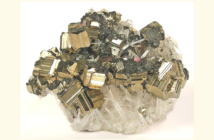
Thermal runaway is a phenomenon where the chemical condition and the temperature within the battery are generated faster than they dissipate. It is a chain reaction where the rising cell temperature accelerates the chemical reaction in the battery and destroys it.
Thermal runaway is a catastrophic situation because when the battery cannot eject the heat that it generates, its components melt, and it releases undesired gasses, heat, smoke, and acid, damaging the adjacent equipment.
Lithium-ion batteries are especially prone to thermal runaway. They charge quickly and they are lightweight, making them an appealing choice for airlines looking to reduce their energy usage.
Thermal runaway reactions can be endothermic, which means that they can absorb heat from their surroundings, and exothermic, which means that they can put heat out into their surroundings as the reaction proceeds.
Thermal runaway also develops in a VRLA battery. This happens when the heat generation rate inside the battery exceeds the rate of heat it can expel. If this condition continues for a long period of time, the battery temperature increases until the cells dry out and the container softens (100ºC), and melts the plastic components of the battery (160ºC).
During charging, lead-acid batteries are exothermic, as the cells generate heat from the chemical reaction, which is dissipated easily to the environment. However, when the battery is fully charged, the energy from the ongoing charge current could breakdown the water in the electrolyte. The breakdown of the water into hydrogen and oxygen gases is usually absorbed. But, if the oxygen drifts to the positive plate, it will instantaneously react and recombine back into water. This reaction will create heat, and the resulting temperature rise will increase the rate of the reactions, causing the cell to accept more charge current, which causes more heat and gassing, thus expediting the runaway condition.
Related Articles



